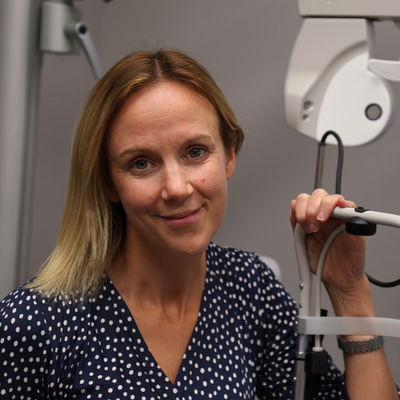- OT
- Life in practice
- Business management
- Making the most of chair time
Myopia guide
Making the most of chair time
From printed resources to making myopia management a team effort, OT learns how to maximise time spent in the consulting room

09 June 2023
Although a business may boast equipment with many zeroes on the price tag, when it comes to the most valuable asset within an optometry practice, there is a strong case for the intangible but vital resource of clinician time.
OT hears from optometrists about the lessons they have learned while streamlining and refining their myopia management offering.

“You can set the scene during an initial sight test, but realistically to do it properly and get good patient engagement you have to get them back in for a separate appointment,” Sarah Farrant, of Earlam and Christopher Optometrists, shared.
For a practice that is not offering myopia management, clinicians can boost awareness of lifestyle factors that are connected to myopia and make patients aware that myopia management interventions are available.
“Often we think of either contact lenses, spectacles or orthokeratology as myopia management, but lifestyle advice also plays a role. There’s a lot you can do before you even think about optical aids,” optometrist Ian Cameron, of Cameron Optometry, observed.
The latest guidance from the AOP and College of Optometrists supports practices who do not offer myopia management referring to local practices that specialise in the field.
Increasing awareness
Optometrist Craig McArthur, of Peter Ivins Eye Care, shared that information on myopia management is part of the marketing strategy within the practice.“Our aim is to ensure the patient and parents are aware of what myopia is, what myopia management involves, all the treatment options and the pricing before they attend the practice,” he said.
Any new patient to the practice is asked to complete a lifestyle questionnaire and history before attending their appointment.
A range of tests – including axial length, auto-refraction, corneal topography, optical coherence tomography and ultra-widefield retinal photography – are completed by clinical assistants and dispensing opticians. “This frees up time for the optometrist to complete the examination, discuss the findings and make recommendations based on the results collected,” McArthur shared.
“If everyone plays their part, then our patient journey is efficient, allowing for a much more in-depth examination without derailing our busy clinic diary,” he said.
The value of preparation
Optometrist, Andy Britton, of Specsavers Haverfordwest, also utilises the skills of the whole practice team in order to make efficient use of consultation time.“The best thing you can have to maximise chair time is a well-trained and educated multidisciplinary team, fully conversant with the science and rationale behind the need to offer myopia management,” Britton emphasised.
“This allows an optometrist to have the full conversation with a patient and parents when time allows, but for this to be delegated to dispensing opticians as required,” he said.
The best thing you can have to maximise chair time is a well-trained and educated multidisciplinary team
Optometrist, Jason Higginbotham, recommends encouraging parents and patients to fill out a questionnaire covering risk and lifestyle factors before they visit the practice or in the waiting room.

At Cameron Optometry, reception staff will ask patients to bring in or send through their old prescriptions and spectacles in preparation for their first myopia management appointment.
Optometrist, Gillian Bruce, highlighted that it is helpful to have as much information as possible about previous prescriptions before the consultation.
“You will often get people who are keen to start as soon as they see you but it is very difficult in the future to assess whether an intervention is working if you don’t have some understanding of what their progression was like prior to the appointment.”
My motivation
Optometrists share their inspiration for providing myopia management
“First and foremost, providing correction for myopia is life-changing, as clear vision is essential for a child’s everyday experience both at home and at school. A lower minus prescription is always better – cosmetically, functionally as well as reducing the risk of future myopic pathology. I see myopia management exactly the same as correcting myopia in the traditional sense, except we now have newer technology products to prescribe.”
Sarah Morgan
“The opportunity to provide spectacle free vision to so many children in the short-term, whilst simultaneously reducing the risk of myopia progression and the associated increased risk of eye disease later in life, is the motivation to improve what we do every day. I find this area of practice hugely professionally rewarding”
Craig McArthur
“We pride ourselves in our practice on providing the best options for our community. Not being able to provide this technology to our younger patients in Worcestershire didn’t sit right with us”
Dean Roberts
“I have seen first-hand the effects of myopic eye disease in later life, not only in my patients but in family members. Even low to moderate myopes will have some restrictions in their career options, so why not at least try to keep their life choices as open as possible?”
Rachael Smith





Comments (0)
You must be logged in to join the discussion. Log in